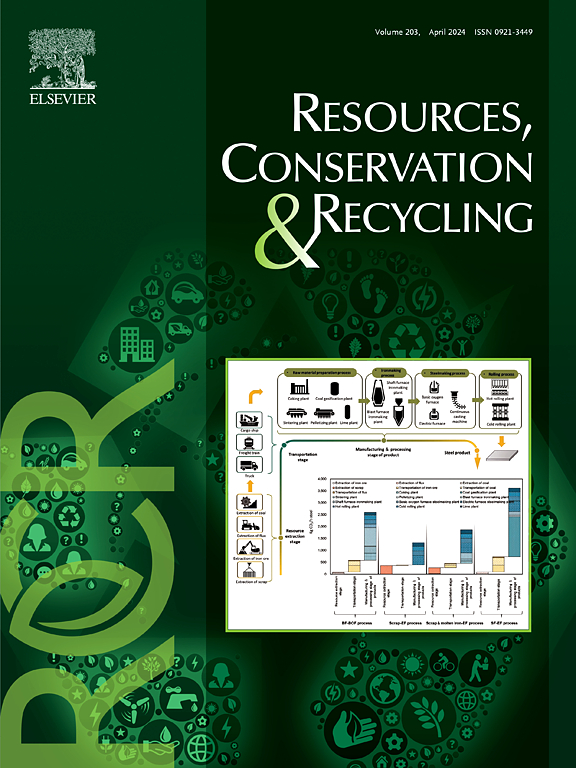Capacitance capacity of biochar-incorporated cementitious composite
IF 11.2
1区 环境科学与生态学
Q1 ENGINEERING, ENVIRONMENTAL
引用次数: 0
Abstract
The utilization of cement-based materials in producing capacitors has attracted wide attention. Waste biochar remaining from the pyrolysis of biomass is a porous and highly conductive material, which has good potential in the preparation of capacitors. The research found that incorporating biochar into cement composites significantly enhanced their electrical properties due to its porosity and conductivity. As the amount of biochar increased, capacitance initially rose before declining, peaking at seven days of 56.1 μF with a notable increase of 80.38 % over non-biochar composites. This improvement was attributed to the formation of a conductive network within the composite matrix facilitated by biochar's porous structure. Hydration ratio initially increased and then decreased with increasing biochar content. The micro and meso porosity of the composites increased with biochar content. Overall, this study underscores the potential of utilizing biochar as a valuable additive in the development of cement-based capacitor electrodes.

求助全文
约1分钟内获得全文
求助全文
来源期刊

Resources Conservation and Recycling
环境科学-工程:环境
CiteScore
22.90
自引率
6.10%
发文量
625
审稿时长
23 days
期刊介绍:
The journal Resources, Conservation & Recycling welcomes contributions from research, which consider sustainable management and conservation of resources. The journal prioritizes understanding the transformation processes crucial for transitioning toward more sustainable production and consumption systems. It highlights technological, economic, institutional, and policy aspects related to specific resource management practices such as conservation, recycling, and resource substitution, as well as broader strategies like improving resource productivity and restructuring production and consumption patterns.
Contributions may address regional, national, or international scales and can range from individual resources or technologies to entire sectors or systems. Authors are encouraged to explore scientific and methodological issues alongside practical, environmental, and economic implications. However, manuscripts focusing solely on laboratory experiments without discussing their broader implications will not be considered for publication in the journal.
 求助内容:
求助内容: 应助结果提醒方式:
应助结果提醒方式:


